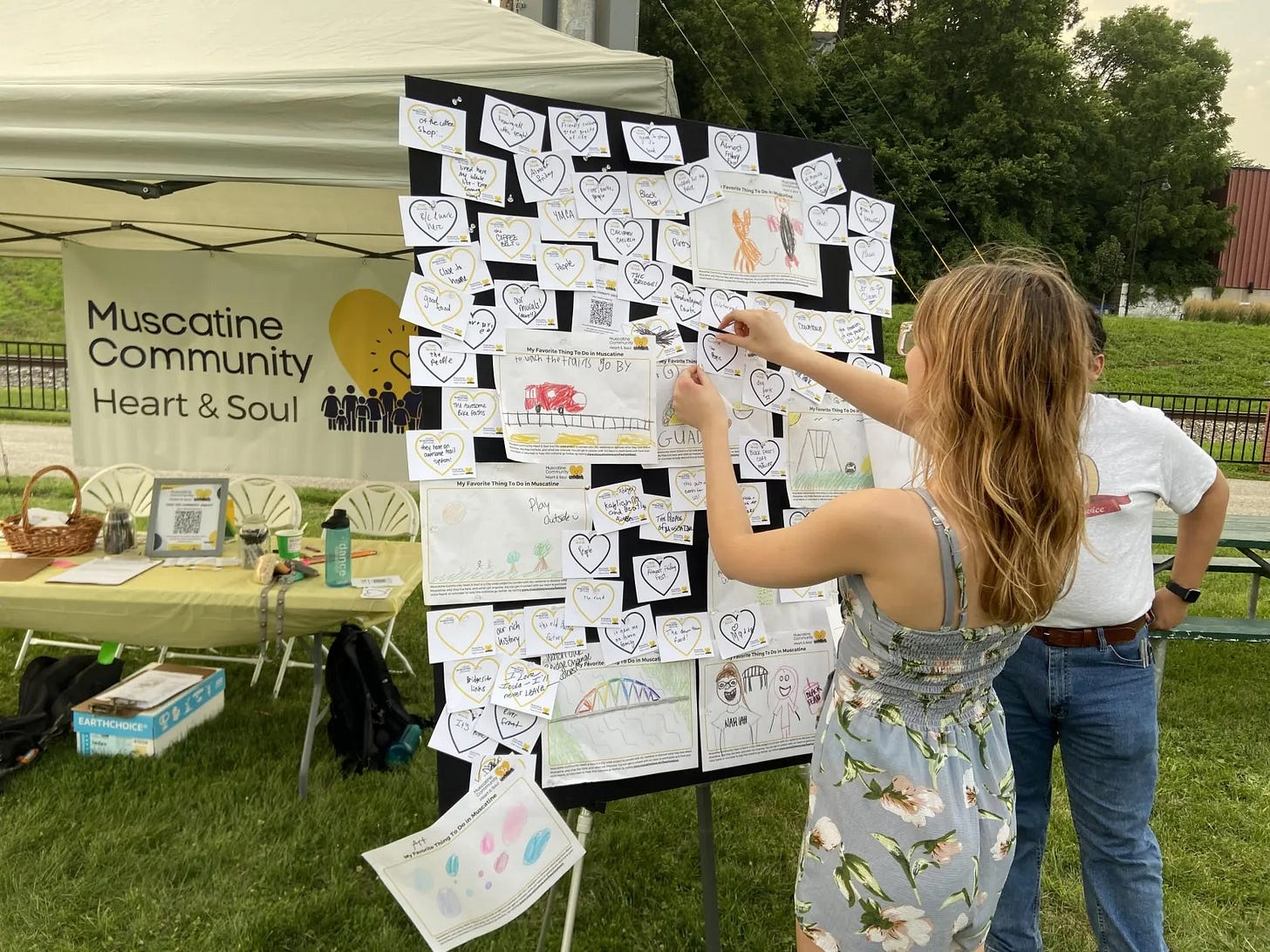On Civic Engagement and Philanthropy
The power of bringing residents together and turning ideas into action

I remember taking a civics class in high school. It wasn’t a year-long course, but it’s left an impact on me that’s lasted more than two decades (thanks, Mr. Lane!)1.
I know, I know — I am running the risk of sounding curmudgeonly with the I remember when… (For the record: I turned 39 this month, and I did not walk up hill both ways to school.).
I share that I remember that particular course because it helped me develop an appreciation and an admiration of how things work — and a recognition of the work needed to be done to ensure things are actually working.
To be clear: I firmly believe that there should be a greater emphasis on, and inclusion of, civics education at all levels. But the fact that civics is less present in curriculum than it used to be doesn’t mean there isn’t work being done elsewhere. That, too, deserves our attention.
There’s the famous line from Benjamin Franklin, “A republic, if you can keep it,” given in response to being asked by Elizabeth Willing Powel: “Well, Doctor, what have we got, a republic or a monarchy?” at the Constitutional Convention.
Years before I’d come to learn of that historic exchange, and then go on to quote it often, I saw the People’s involvement in the how thanks to my dad.
When I was still working on my ABCs, I remember him coming home from a day spent on a barge filled with coal or operating a tipple along the Monongahela River that winds through southwestern Pennsylvania and north-central West Virginia to pick me up and head off to his polling place. Perched atop his shoulders, I can still feel the soot in his hair as I’d hold on as he’d head in.
Why take the time to stop home? Why take me?
Years later when I asked my dad those whys his response amounted to: This is part of how we’ve kept, and keep, the republic more than two-hundred years later, and he wanted me to see it in action in hopes that the work would continue on with me.
Voting is, of course, not the only way we’ve kept it, and continue to work to keep it (and my dad did more than just that). Other ways we’ve kept, and continue to keep (and work to improve) our democracy is by being civically engaged.
And there is, of course, a growing concern for the lack of civic engagement today, and the impact of ‘civic deserts’. And as the nation grapples with a loneliness epidemic, one argument is to improve our mental and physical health by restoring our civic health because they are linked.2
Civics, for me, has grown beyond a childhood curiosity and young-adult fascination. Professionally, I have had the privilege of writing about local elections, interviewing Senators as they approach retirement or continue to serve, and have called upon to moderated various debates over the years.
I’ve also had the privilege and pleasure of working for a nonpartisan think tank that provides in-person and virtual civic programming, churns out scores of publications, facilitates a civic leadership academy, and imports ‘big ideas’ to a smaller metro.
Most recently, I had the opportunity to write about how foundations and other philanthropic organizations are engaging residents for The Chronicle of Philanthropy.
It is a continuation of the reporting and storytelling I have been doing about Community Heart & Soul, a resident-driven community development model based in Vermont with a growing national footprint that includes over a hundred towns to date.
For a good introduction to what Community Heart & Soul is, and what it look like in action, here is a panel discussion I moderated (with an introduction by Our Towns Civic Foundation Co-Founder and veteran journalist and author James Fallows) that includes folks from the Community Foundation of Greater Dubuque and PA Humanities (both of which are featured in my article for The Chronicle):
I open The Chronicle article by referencing “Four Traditions of Philanthropy.” In their essay, Elizabeth Lynn, the founder of the Center for Civic Reflection, and Susan Wisely, who spent a decades-long career with the Lilly Endowment, reflect on the roles of philanthropy in the United States.
Not giving too much away (as I hope you’ll give the article a read), they argue “people need opportunities to learn from themselves and about themselves, from others and about others,” as they call for an investment in a fourth tradition: civic engagement.
As I write:
Seventeen years since Lynn and Wisely’s essay, whether watching television, reading newspapers and magazines, or scrolling through social media feeds, it is difficult to escape today’s ‘Divided States of America’ narrative. There’s also the recent growing concern of social isolation, or a loneliness epidemic, in America.
Today, there may yet be a greater need to form and support relationships and cultivate conversations among and between residents. At the local level, fostering a connectedness is critical to healthy, vibrant residents and communities.
Who and how to do that? Turn to the people.
Looking to the aforementioned Community Foundation of Greater Dubuque and PA Humanities, as well as the Findlay-Hancock County Community Foundation in Ohio, Georgia’s Electric Member Cooperatives, and Mercer County Better Together in Illinois (among others), with their partnerships with Community Heart & Soul, shows the power of what investment in civic engagement looks like.
When I had the chance to return to my high school alma mater to address the class of 2021 at their graduation, Mr. Lane, who was in the audience, was among a few teachers I referenced and thanked.



